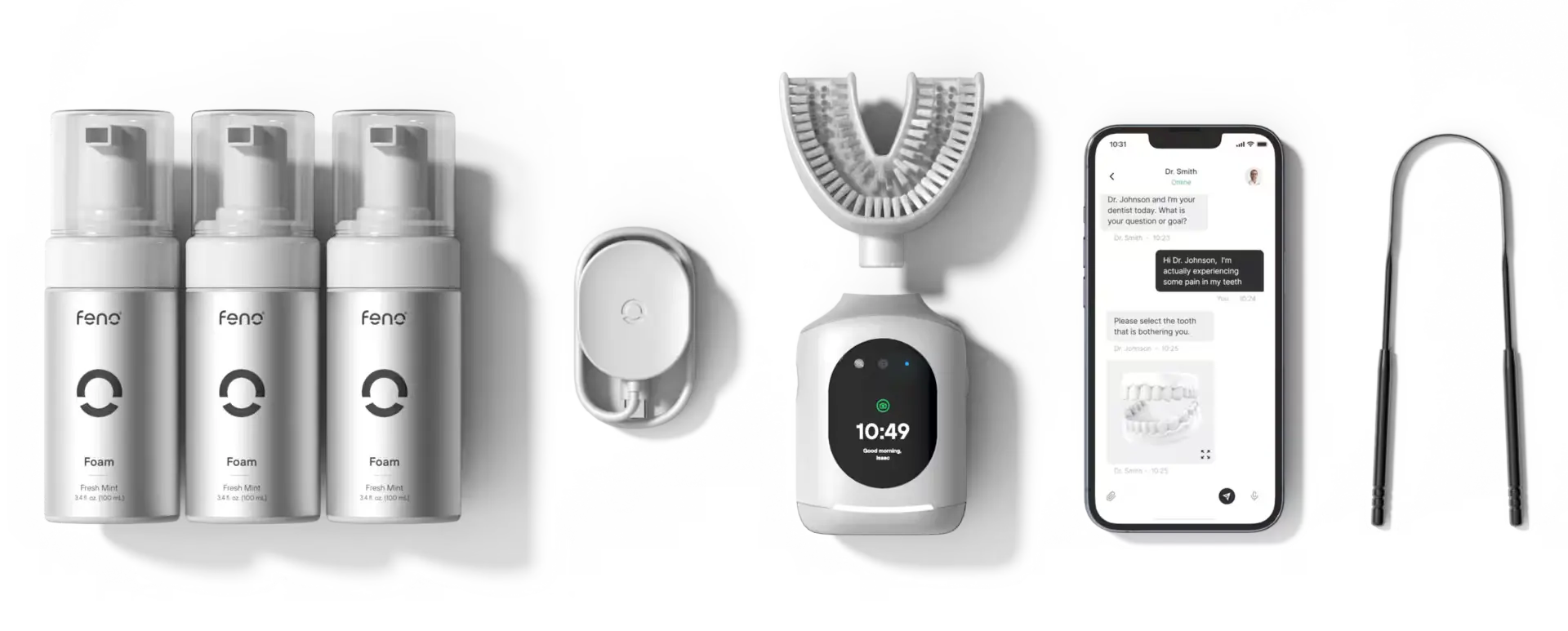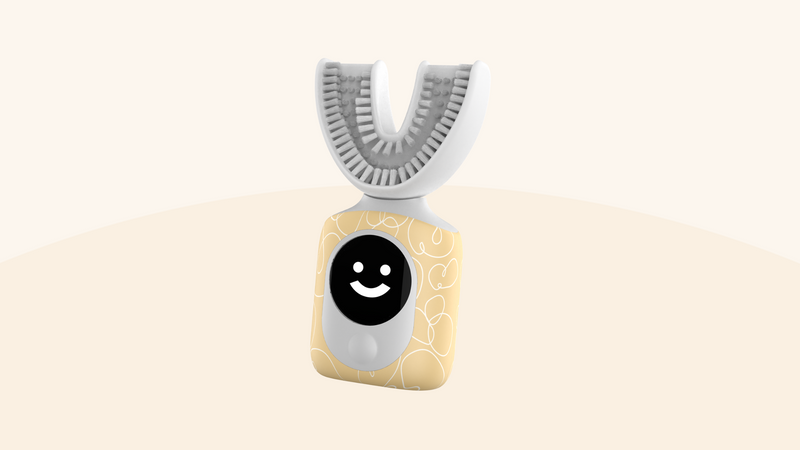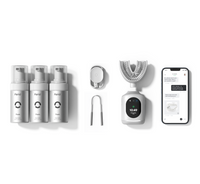
12 min read
How Oral Care Plays a Key Role in Disease Prevention
Your mouth is like a window into your body's overall health. When it’s not taken care of, it can show early signs of diseases that affect the rest of your body. There are strong links between poor oral health and conditions like heart disease, diabetes, and even stroke. This connection highlights the many oral care benefits beyond just having a nice smile. Bacteria from gum infections can enter the bloodstream, leading to inflammation in other body parts. People with chronic illnesses often have worse dental problems, and vice versa. Protecting oral health helps keep your immune system strong and lowers your risk of serious diseases. Keeping your mouth healthy is a powerful way to support your entire body.
Foundations of Effective Daily Dental Hygiene
The Importance of Plaque Disruption
Plaque is a sticky film that builds up on your teeth every day. If it isn't removed regularly, it hardens into tartar, leading to cavities and gum infections. Disrupting this buildup is the foundation of good dental care because it stops harmful bacteria from causing damage. Gentle but thorough brushing every morning and night helps prevent gum disease. Plaque can also form along the gumline, making consistent cleaning essential. Only a dentist can remove plaque once it turns into tartar. That’s why daily care is your best defense. Brushing with the right technique and tools helps break up plaque before it becomes a bigger problem, saving you from costly treatments down the road.
Building a Practical Dental Care Plan
Creating a daily routine that fits your lifestyle makes staying consistent with your oral hygiene easier. A solid dental care plan should include brushing, flossing, and regular rinsing. Brushing twice a day and flossing once a day is a good start. Rinsing with water or mouthwash after meals helps clear away leftover food. Writing down your routine or using reminders can keep you on track. Make appointments for dental checkups ahead of time to keep your plan organized.

Choosing the Right Toothbrush for Your Needs
Your toothbrush plays a bigger role in your health than most people think. It’s essential to pick one that works well for your specific mouth and gum type. For people with tender or easily irritated gums, a toothbrush for sensitive teeth is a wise choice. It helps clean gently without causing discomfort or bleeding. Some brushes are better at removing buildup, while others are designed for gentle use. Choosing the right one means better results with less damage. Bristles that are too firm may wear down enamel or hurt the gums. A toothbrush for plaque has firmer bristles and may include added features like angled heads or polishing cups to remove buildup effectively. In contrast, a gum toothbrush or soft-bristle brush is made to be gentle and reduce the risk of irritation, especially for people with gum recession or sensitivity. Picking the right type depends on your mouth’s specific needs. Using a brush that doesn’t suit you might leave plaque behind or hurt your gums. Knowing the difference allows you to make smarter choices for your daily routine and keeps both teeth and gums healthy.
Interdental Cleaning and Flossing Best Practices
Correct Flossing Techniques
Flossing is one of daily oral hygiene's most underrated yet vital aspects. While brushing cleans tooth surfaces, flossing removes plaque and food particles from areas a toothbrush can’t reach, particularly between teeth and below the gumline. Below are the key best practices:
- Use the Right Length: Most dental professionals recommend using about 18 inches, which allows ample floss to clean each tooth with a fresh section. Using too short a strand can limit your reach and increase the likelihood of reusing contaminated floss between teeth. Conversely, a longer piece offers more control and hygiene benefits. Wrap most of the floss around the middle fingers of both hands, reserving about two inches for actual flossing. This allows for better tension control and more straightforward navigation between the teeth. The extra length also helps you maintain grip as your hands become moist or slippery. Inadequate floss length can lead to rushed, imprecise movements that may irritate the gumline or miss plaque entirely.
- Hold It Tightly but Gently: After securing the appropriate length of floss, it’s crucial to hold it correctly to ensure precision and gentleness. Using your thumbs and index fingers, grip the floss firmly while maintaining enough slack for maneuverability. The goal is to keep the floss taut to control its movement between teeth, but not so tight that it cuts into your fingers or exerts excess pressure on your gums. Applying too much force or creating a sawing motion can result in irritation or microscopic abrasions to the soft gum tissue. On the other hand, holding the floss too loosely might cause it to fray or slip ineffectively across the tooth surface. A gentle, controlled hold allows you to navigate purposefully, reducing the risk of injury. Beginners often make the mistake of applying more pressure to compensate for poor grip, increasing the likelihood of discomfort and gum recession over time.
- Slide, Don’t Snap: A common error people make when flossing is snapping the floss into the space between teeth. This jarring motion can cause sudden trauma to the gumline, leading to pain, inflammation, or even small tears in the tissue. Instead, the floss should be guided gently with a side-to-side or zigzag motion as it moves downward between the teeth. This method allows for a controlled descent into the tight spaces without sudden impact. Once the floss reaches the tooth's base, it should glide smoothly without resistance. When you slide rather than snap, you reduce the chances of accidentally striking the gums, making them more prone to bleeding or infection. Developing muscle memory for this gentle motion may take time, but it pays off with healthier gum tissue and more effective debris removal.
- Form a C-Shape: Rather than pushing the floss straight down and pulling it back up, which can miss plaque near the gumline and cause irritation, it should be curved into a C-shape around the tooth's base. This contouring action allows the floss to hug the tooth surface more effectively, extending slightly beneath the gumline without causing damage. The curve helps guide the floss along both sides of the tooth, removing buildup that often hides at or just under the gum’s edge. Executing the C-shape correctly provides a deeper clean while respecting the natural curve of the gums. Additionally, it prevents excessive force from being directed at the soft tissue, minimizing the risk of gum cuts or recession. Practicing this technique may feel awkward initially, but it dramatically enhances the floss's effectiveness by maximizing surface contact.
- Use a New Section: Using the same part of floss for multiple teeth is a common but critical mistake that can undermine your entire flossing routine. After each tooth, rotate the floss to expose a fresh segment. This prevents the transfer of bacteria and plaque from one area of the mouth to another, especially if there are inflamed or infected regions. Reusing the same section spreads harmful microorganisms and diminishes the floss’s effectiveness, as it becomes slick with saliva and particles. By shifting to a clean segment, you maintain a hygienic process that actively removes buildup rather than redistributing it. To do this, unwind new floss from one middle finger while wrapping the used section onto the other.
These techniques empower users to clean more effectively while minimizing the risk of injury, setting the stage for lifelong dental health.

Interdental Brushes and Water Flossers
While floss is effective, it’s not the only way to clean between your teeth. Interdental brushes and water flossers are excellent tools for people who find flossing difficult or have dental work like braces or bridges. These tools make removing debris in areas that standard floss may miss easier. Interdental brushes come in various sizes and fit gently between teeth to clean around the gumline. Water flossers use steady pulses to dislodge food and bacteria from tight spots. Including one of these in your routine can boost your cleaning results and promote oral care and wellness.
Consistent Cleaning
Gum disease starts quietly with redness, swelling, or occasional bleeding. These early signs are easy to miss but can lead to significant issues if ignored. Knowing how to stop gum disease means understanding that daily, thorough cleaning is your best defense. Brushing alone isn’t enough. You must clean between teeth and along the gumline consistently. If bacteria are left to settle, they inflame the gums and eventually cause tissue loss. Responding quickly to early signs supports the importance of dental hygiene and reduces the chance of long-term damage.
Preventive Dental Care and Professional Support
Biannual Cleanings and Topical Fluoride Treatments
Professional dental cleanings twice a year are more than routine; they’re vital in maintaining a healthy mouth. These visits allow dental professionals to remove tartar buildup that brushing and flossing can’t reach. They also provide an opportunity to spot signs of decay or gum disease before they become serious. In addition to cleanings, topical fluoride treatments strengthen enamel and help prevent cavities. Fluoride rebuilds weakened tooth surfaces, making them more resistant to acid attacks.
Dietary Counseling
What you eat has a direct impact on your dental health. Sugary and acidic foods feed harmful bacteria, increasing the risk of cavities and gum inflammation. Dental professionals can provide dietary counseling to help reduce these risks. They might suggest swapping out soda for water or limiting snacks that stick to your teeth. Making wise food choices protects the balance of your mouth’s pH and supports long-term health. These strategies are part of a broader set of dental health tips that includes nutrition. Understanding how diet affects your teeth empowers you to make better decisions and protect your enamel.
Mouthrinses and Gum Stimulators
These tools target areas often missed by standard techniques and support overall gum health and cleanliness. Here's how to use both effectively:
- Use Mouthrinse After Brushing: Incorporating a therapeutic mouthrinse into your routine after brushing is a simple yet highly impactful way to combat bacteria and maintain oral hygiene throughout the day. An alcohol-free antibacterial mouthwash is often recommended because it targets harmful microorganisms without drying out the mouth or irritating sensitive tissues. Swishing with a rinse for at least 30 seconds helps coat the teeth, tongue, and gums in a protective formula that works even after you spit it out. It reaches into crevices that a toothbrush or floss may not access, making it particularly helpful for individuals with braces, crowns, or bridges. Moreover, certain mouthrinses contain fluoride, which strengthens enamel and provides an added layer of defense against cavities. Mouthrinse should be used after brushing and flossing so that other cleaning agents don’t immediately remove the active ingredients.
- Avoid Rinsing: Mouthrinses are designed to continue working even after you spit them out. The longer they remain on your teeth and gums, the more effectively they can prevent bacterial growth, neutralize acids, and strengthen enamel. Diluting these effects with water reduces their efficacy and can undo some of the rinse’s intended benefits. If the aftertaste is strong, consider choosing a milder flavor profile or switching to formulations made explicitly for sensitive users. You can also wait 15–30 minutes before consuming water or food to allow the ingredients to settle and absorb. This pause enhances the mouthwash's action, giving your mouth an extra layer of defense between brushing sessions.
- Use Gum Stimulators: Gum stimulators are often overlooked in oral hygiene routines, yet they play a vital role in promoting healthier gums and improving circulation in the tissue surrounding your teeth. Typically made with a soft rubber or silicone tip, these tools are designed to be gently applied along the gumline, not jammed between the teeth or into the gums. To use them correctly, apply light pressure while making small circular or back-and-forth motions along the margin where the teeth meet the gums. This action stimulates blood flow, helping nourish gum tissues and reducing the likelihood of inflammation or recession. Regular use can also assist in dislodging residual plaque or food particles that floss or brushes might miss, particularly in awkward spots or between dental restorations. Gum stimulators can offer a gentle massage that encourages tissue resilience without introducing abrasions for those who suffer from gingivitis, receding gums, or heightened sensitivity. They’re especially beneficial after meals or before bed, adding a finishing touch to oral care.
Adopting these habits and following each step carefully strengthens your mouth’s natural defenses and creates a more balanced, comprehensive approach to oral care.
Leveraging Technology for Smart Oral Care
Features of the Modern Sonic Toothbrush
Advancements in oral care tools have changed the way people approach brushing. A sonic electric toothbrush uses high-frequency vibrations to remove plaque more efficiently than manual brushing. These vibrations create fluid movement between teeth and under the gumline, helping clean areas that bristles alone can't access. Many models include pressure sensors, timers, and multiple cleaning modes, allowing users to customize their brushing experience. Maintaining effective oral hygiene with minimal effort encourages more consistent habits, especially for those who struggle with motivation.
Using Dental Care Apps and Brushing Heat Maps
Oral health technology has extended beyond the toothbrush itself. Dental care apps work alongside smart brushes to improve your technique and track your progress. These apps often display brushing heat maps, highlighting areas of the mouth that are frequently missed. The heat map feature gives real-time feedback, helping users improve coverage and consistency. It also stores brushing data over time, allowing you to review trends and set goals. Having a visual record of your efforts encourages accountability and better engagement with your routine.

Oral care is a critical part of protecting your long-term health. The actions you take each day to care for your teeth and gums create a ripple effect throughout your body. Keeping your mouth clean and your gums strong reduces the chances of infections that could affect your heart, lungs, or other organs. Understanding this link encourages a more profound commitment to maintaining healthy habits. The small steps taken in front of the mirror each day contribute to a larger picture of wellness.
Share




